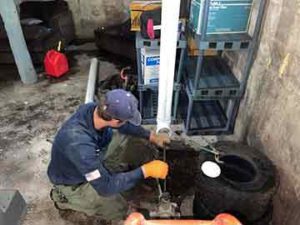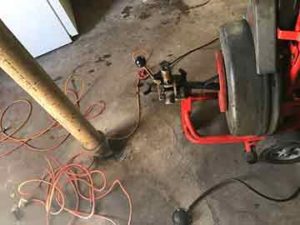What exactly is sewer rodding and when should you use this drain cleaning technique?
Sewer rodding is an advanced technique for removing stubborn clogs and blockages from drains and sewer lines. It is typically used when other methods have failed. It is highly effective for removing clogs that are located deep down the drain line. Property managers are well familiar with this, says McKenna & Vane, as most tenants only pay attention to it when the issue becomes unbearable.
This is how sewer rodding works
The procedure involves feeding a flexible polypropene rod (also called a sewer rod or plumbing rod) into the pipe until it reaches the location of the blockage. The rods can be connected to make the line longer. They are also flexible enough to easily go around bends.
At one end of the rod is an attached mechanical head with sharp teeth that can drill and cut through any kind of blockage inside the pipe. Sewer rodding is particularly useful for shearing away tree roots and sludge buildup inside pipes. It can be used for both small and large pipes.
The cutter blades used for sewer rodding come in various sizes. The right blade size depends on the diameter of the pipes. For instance, using a three-inch cutter blade for a four-inch pipe may improve the flow of water in the pipe, but it will not remove all of the obstructions.
When do you need sewer rodding?
For many homeowners, the first thing they do when they have a blockage inside one of their drains is to reach for a plunger or drain snake. But drain snakes and plungers are only useful for removing blockages that are located near the opening of the drain.
When the clog or blockage is further down the drain, it is usually not possible to remove it with a plunger or drain snake. In some cases, a drain snake, or similar plumbing, will actually worsen the problem. It is in situations like this you need sewer rodding.
What kinds of drain blockages require sewer rodding?
There are many situations where sewer rodding is the best way to remove obstructions from pipes. A few of them include those blockages and clogs caused by the following:
- Tree roots
Plant roots can penetrate underground pipes and block them. Roots enter the pipes in a bid to access the nutrient-rich water inside them. If plant roots are given enough time, they can block pipes completely or even damage them so badly that the pipes have to be replaced.
- Sludge buildup
Over time, a thick slurry deposit can accumulate inside pipes and narrow them. There are many things that combine to create this kind of situation. Sometimes, it can be due to a fault inside the drainpipe. Other times it is the result of flushing the wrong stuff into the drain.
- Hair
The main issue with hair getting into the drain is it can attach to the edges or ball up inside the pipe. If this happens, the hair will catch other debris flowing through the pipe and eventually accumulate enough debris to block the drainpipe or sewer line.
- Grease and oil
Once inside the drain, grease and oil form a slick residue that attaches to the surface of pipes and traps dirt, hair, and any kind of debris. As more grease and oil is dumped into the drain, the process is repeated until the water cannot flow freely through the pipes.
- Wipes and other items
Many so-called “flushable” items really have no business inside your drains. Things like feminine products, paper towels or napkins, Kleenex, and tissue paper should not be allowed into the drain. The only thing you should flush into your drain is toilet paper.
- Some food items
Starchy foods like potatoes and rice, once inside the drain, will swell up to many times their normal size and block the pipe. Everyday things like eggshells and coffee grounds will also block the drain if you flush them down the kitchen sink.
When should you use sewer rodding and what are its benefits?
If you have a stubborn clog or the clog is in a hard-to-access part of the drain, you need sewer rodding. If your sink does not empty quickly or you hear gurgling sounds from the drain, you need sewer rodding. If you think a tree is blocking your drainpipe, you need sewer rodding.
What are the advantages of using sewer rodding?
- Sewer rodding lets you pinpoint the location of blockages inside the drain and remove them completely. Unlike methods using chemical cleaners to remove clogs, sewer rodding will remove blockages with accuracy.
- Sewer rodding is an efficient and cost-effective solution. It does not take a lot of time to complete, and you don’t need a large team or costly excavations. Sewer rodding will save you time and the cost of future sewer line repairs.
- Sewer rodding protects your pipes. Using this technique once a year will reduce the likelihood of serious blockages that will damage the pipes and cost thousands of dollars to fix.


